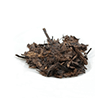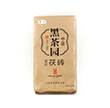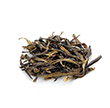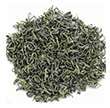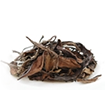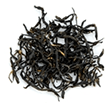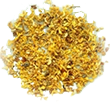Chinese Teapots - Manufacture And Clay
- Handmade
- Half-handmade
- Moulded
Half-handmade is the assembly of machine-moulded pieces by hand with traditional tools. Many good teapots using Zisha clay are made in this way.
Moulded teapots are made by a mass-production process of assembling pre-moulded pieces by machine, such as the two halves of the teapot and lid and attaching a pre-moulded spout and handle. Even though moulded teapots are not as valuable as handmade or half-handmade teapots, many are made with Yixing clay and are still superior for tea-making than glazed or porcelain teapots.
There is a certain pride in owning a handmade teapot, especially if it is made by a famous artist. The making of teapots is a highly skilled art and some Zisha teapots from famous artists are collectors’ items and fetch very high prices, especially if from the 1980’s or 1950’s or even from the Qing Dynasty (1644 – 1912). Antique teapots are prized because no two are alike, with each one having a unique history, patina, “taste” and “personality”. Knowing antiques requires highly specialized knowledge so only deal with an expert you can trust.
Clay
Yixing (Yee-zhing) clay is the famous clay from the Yixing region of Jiangsu Province in Central China from which the finest teapots have been made for centuries. There are many types of Yixing clay but they can be categorized into two grades of quality:- “Earth-clay” made from mud
- “Stone-clay” made from rock
The unique granular structure and mineral composition of Zisha clay gives it excellent heat handling properties that are excellent for maintaining a stable temperature in the teapot, thereby mitigating temperature fluctuations which can diminish the flavour of tea.
The mineral and metal content of Zisha includes iron oxide, kaolinite, quartz and mica, making teapots very strong when fired and resistant to damage compared to more delicate Western pottery. High quality Yixing clay is 3-6 times less absorbent than other clays which helps teapots to retain the fragrance of teas.
Chart: Quality of Yixing Clay
| Yixing “Earth” Clay (this example is artificially coloured to look like Zisha “Wuni” Black Clay) |
 |
 |
| Yixing “Stone” Clay (also called Zisha “Purple” Clay, “Natural” or “Original” Clay) . |
 |
 |
Quality of Clay
Clays are often mixed together and there are an infinite variety of combinations. There are 3 basic types of clay:- Natural (also called Original in Chinese)
- Mixed (Pingni)
- “Artificial”
“Artificial” clay (including Yixing and non-Yixing clay) is usually low quality clay that has been coloured with artificial dyes, often duplicating natural Zisha colours. These teapots will not perform as well as a Zisha teapot and not look as nice over time as the colour will fade compared to teapots made from Zisha clays which retain their natural colour.
Chart: Composition of Clay
| Yixing Zisha “Purple” Clay. This example has no mixed clay so it could also be called Qing Shui Ni |
 |
 |
| Mixed Clay (Pingni) |
 |
 |
| Artificial (Coloured) Clay |
 |
 |
Colour of Clay
Assessing the quality of a teapot by the colour of the clay is a highly specialized skill and the source of much debate among experts. Here’s a few guidelines to help you understand how clay is used in Chinese teapots.The natural colour of Yixing “earth-clay” is white. Zisha clay comes in a variety of natural colours, of which the most prized are:
- Red (Hongni)
- Purple (Zhini)
- Green (Luni) – usually mixed with other clays or overlayed
| Hongni (Red) |

|
 |
| (Purple) not to be confused with Zisha (“Purple Clay”) which describes the entire class of natural colour, high-mineral Yixing clays made from stone |

|
 |
| Duani (Yellow) |
 |
 |
| Heini or Wuni (Black) |
 |
 |
| Luni (Green) |  |
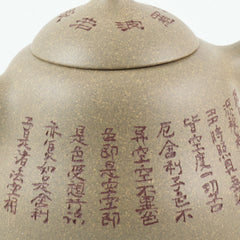 |
There is an another type of Zisha red clay called Zhuni which is extracted from a rare type of rock vein. The teapots made from this clay are made oversized and fired at a special low temperature (about 1,080F / 582C) and for a much longer time than other teapots. Zhuni teapots shrink during firing, making the clay extremely hard and dense. If you look closely, you can see fine “wrinkles” in the clay from the shrinkage. Even though the firing is performed with the highest degree of precision, the process is so sensitive that over half an entire batch of teapots will crack leaving just a few good ones. Zhuni teapots usually have a distinct red or orange colour and produce a high pitched sound when tapped. Needless to say, Zhuni teapots are very rare and very expensive. The markets abound with teapots claiming to be “real Zhuni”, both new and antique, so don’t even consider buying one of these unless you have access to a trusted expert who can verify the clay for you.
| Zhuni |
 |
 |
The Sound of a Teapot
High-fired teapots have a clear and distinct ring like a small bell when you lift up the lid about a quarter of an inch and allow it to drop gently on to the teapot (make sure you are holding the teapot on the flat of your hand so as to not dampen the teapot in any way).Teapots used for Black and Pu-Erh Tea are thick and made from a more porous clay than other teapots and don’t have the distinctive bright ringing sound – but this has nothing to do with the quality. These types of teapots are selected by an examination of the clay which usually has a rougher texture than teapots used for other teas.
Older teapots have a distinctive patina from the infusion of tea oils and constant use which can dull the pitch. New teapots have a similar shine from a wax coating which protects the clay and makes them look nice on the shelf. (see how to remove this coating below in Seasoning A New Teapot below)
Antique teapots have a history (verifiable or not) and have been infused with tea oils over many years. They can produce a decided “thunk” rather than a clear ring because of the accumulation of oils in the clay but can still be of the finest quality. But remember, you are in the antique game now so buyer beware!
Chart: Firing Type
| High-Fired Zisha Clay |
 |
 |
| Low-Fired Zisha Clay |

|
 |
New high quality, high-fired teapots have a clear and distinct ring like a little bell when you lift up the lid about a quarter of an inch and allow it to drop gently on to the teapot (make sure you are holding the teapot on the flat of your hand so it is not damping the teapot in any way). In most cases, the higher the pitch and the longer the ring, the finer the quality.
Teapots used for Black and Pu-Erh Tea are thicker and made from a more porous clay than other teapots and don't have the distinctive bright ringing sound - but this has nothing to do with the quality. These types of teapots are selected by an examination of the clay which usually has a rougher texture than teapots used for other teas.
Older teapots have a distinctive patina from the infusion of tea oils and constant use which can dull the pitch. Many new teapots have a similar shine from a wax coating that is applied to protect the clay and make them look nice on the shelf. (see how to remove this coating below).
Antique teapots have a history (verifiable or not) and have been infused with tea oils over many years. They can produce a decided "thunk" rather than a clear ring because of the accumulation of oils in the clay but can still be of the finest quality. But remember, you are in the antique game now so buyer beware!
For more detailed information, see our How-To Guide: "How To Choose A Chinese Teapot by Daniel Lui"
 Top of Page
Top of Page

Ask The Tea Wizard
Don't know which tea is right for you? Answer a few questions and the Online Wizard will show you all the Chinese teas that suit your taste.


